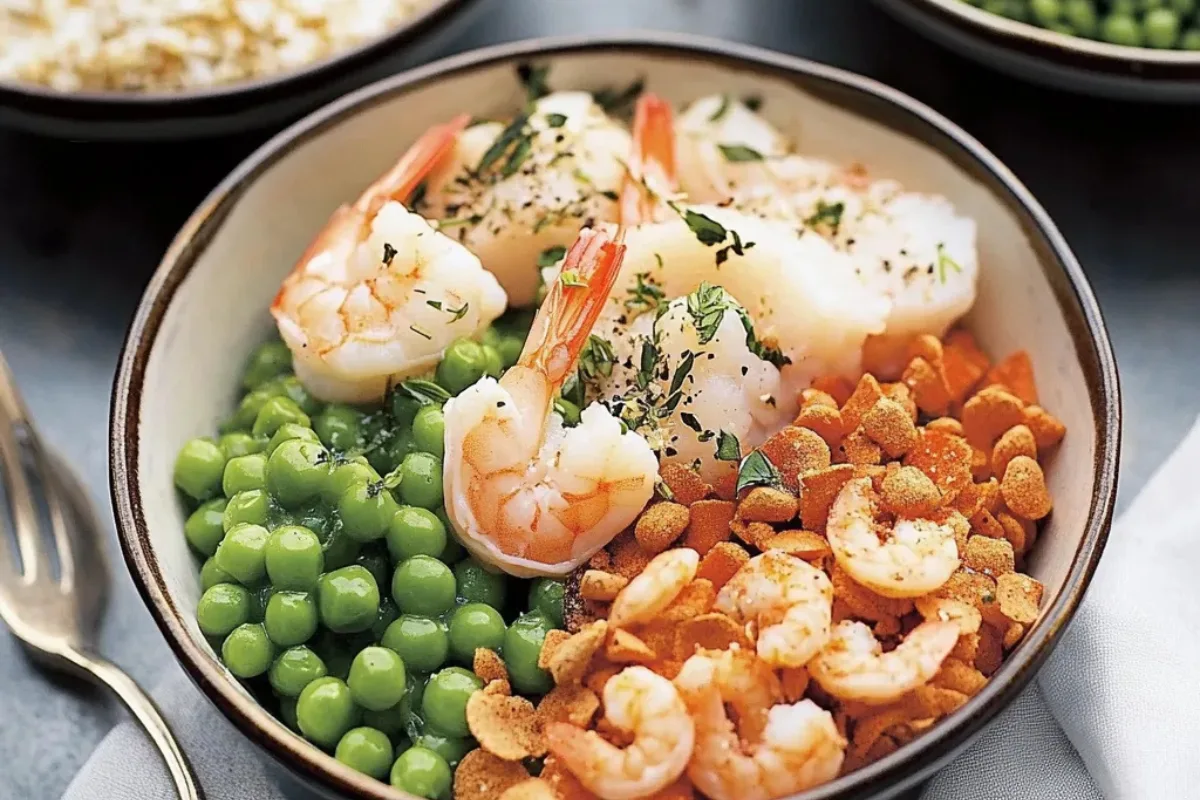If you’re looking for a way to take better care of your aquatic pets, homemade fish food might just be the answer. Creating your own fish food recipe allows you to control the quality, tailor it to specific species, and save money while doing so. This article will guide you step-by-step, covering the nutritional needs of fish, popular recipes, ingredients, and preparation methods. Plus, we’ll discuss the benefits of homemade fish food and provide tips to avoid common pitfalls. Let’s dive in!
Understanding Fish Nutrition
Ensuring your fish thrive starts with understanding their nutritional needs. A balanced diet is critical for their growth, vibrant colors, and overall health.
The Importance of Proper Nutrition for Fish
Fish rely on a carefully balanced diet to support their immune system, promote growth, and maintain vibrant coloration. Poor nutrition can lead to weakened immunity, sluggish behavior, and stunted growth. Homemade fish food helps provide these essential nutrients in the right proportions.
Key Nutrients Required for Healthy Fish Growth
Fish need a mix of protein, carbohydrates, fats, vitamins, and minerals.
- Proteins: Essential for growth and repair, particularly for carnivorous species.
- Carbohydrates: A minor energy source for herbivorous and omnivorous fish.
- Fats: Provide energy and aid in cell membrane formation.
- Vitamins and Minerals: Support metabolic processes and prevent deficiencies.
How Homemade Fish Food Contributes to Balanced Nutrition
By making fish food at home, you can include high-quality ingredients like shrimp, spinach, and spirulina. Unlike commercial food, which often contains fillers, your recipe can be customized to meet the dietary needs of specific fish species. Moreover, homemade fish food is fresher, which guarantees that nutrients are retained.
Types of Homemade Fish Food Recipes
When it comes to crafting the perfect fish food recipe, variety is the spice of life! Different types of food cater to different species, ensuring your fish get all the nutrients they need to thrive. From dry flakes to gel-based options, there’s a recipe for every aquatic friend.
Dry Food Recipes: Ingredients and Preparation
Dry food is one of the most popular choices for feeding fish because it’s easy to store and prepare. It typically includes ingredients like fish meal, spirulina, and dried vegetables.
To make your own:
- Blend your chosen ingredients into a fine powder.
- Add a binding agent, like gelatin or egg, to hold the mixture together.
- Spread it thinly on a baking sheet and bake at a low temperature until dry.
- Break into flakes or small pellets for feeding.
Wet Food Recipes: Steps to Making Nutritious Blends
Wet food is ideal for fish that prefer softer diets, such as carnivorous and omnivorous species. This option combines fresh ingredients like shrimp, spinach, and fish oil.
Here’s how to prepare wet food:
- Blend all ingredients into a smooth paste.
- Add agar-agar to form a gel-like consistency.
- Pour the mixture into molds and refrigerate until firm.
This method guarantees your fish get a meal packed with freshness and essential nutrients.
Specialized Diets for Different Fish Species
Not all fish eat the same food! Herbivores like plecos thrive on algae-based diets, while carnivorous fish like bettas need protein-rich meals. Understanding your fish’s species-specific needs will help you create recipes tailored to their health and happiness.
Ingredients for Fish Food Recipes
Choosing the right ingredients is the cornerstone of a successful fish food recipe. High-quality ingredients make sure optimal nutrition and keep your fish happy and healthy.
Essential Ingredients: Protein Sources
Protein is crucial for all fish but especially for carnivorous and omnivorous species. Excellent sources include:
- Fresh or dried shrimp
- Fish meal
- Egg yolks
These ingredients are rich in amino acids, supporting growth and vibrant colors.
Vegetables and Greens in Fish Diets
Herbivorous fish, such as guppies and mollies, benefit from a diet rich in vegetables. Consider using:
- Spinach: A source of iron and calcium.
- Peas: A favorite for reducing digestive issues in fish.
- Zucchini: Soft and easy to digest.
Blanch vegetables before use to make them softer and more digestible.
Adding Vitamins and Supplements
Even with the best ingredients, vitamins and supplements are often necessary. Adding spirulina powder, calcium, or fish oil guarantees your fish get a balanced diet. These supplements promote immunity, upgrade growth, and even boost breeding success.
Step-by-Step Guide to Making Homemade Fish Food
Crafting your own fish food recipe at home may seem daunting, but it’s simpler than you think. With a few easy steps and fresh ingredients, you’ll create meals your fish will love.
Choosing the Right Ingredients
First, understand the dietary needs of your fish. Do they require a high-protein diet, or are they herbivores thriving on greens? Popular choices include:
- Protein sources: Shrimp, fish fillet, or egg yolk.
- Vegetables: Spinach, peas, or zucchini.
- Supplements: Spirulina, fish oil, and multivitamins.
Blending and Cooking Techniques for Different Recipes
Once you’ve gathered the ingredients:
- Blend everything into a smooth paste for wet food or powder for dry food.
- For dry food, spread the mixture on a baking tray and bake at 150°F until crisp.
- For wet food, add agar-agar and refrigerate to set the mixture.
Storing and Preserving Homemade Fish Food
Proper storage is crucial to maintain freshness. Place your finished food in an airtight container and refrigerate for daily use. For long-term storage, freeze small portions in resealable bags.
For more ideas and meal prep tips, you might enjoy this salmon bowl recipe.
Popular Fish Food Recipes
Here’s a collection of easy and effective fish food recipes you can make at home, tailored to different species and their needs.
Simple Flake Recipe for Tropical Fish
Flake food is a staple for tropical fish like guppies and mollies. To make it:
- Blend dried shrimp, spirulina, and egg yolk into a powder.
- Add gelatin and bake until crispy.
- Break into small flakes for feeding.
Gel Food for Bottom Feeders
For bottom-dwelling fish like plecos or catfish, gel food is a perfect choice:
- Combine boiled peas, zucchini, and shrimp.
- Mix with agar-agar and pour into molds.
- Refrigerate until firm.
Special Treats for Betta and Goldfish
Bettas and goldfish appreciate protein-packed meals. Create a mix using:
- Shrimp paste and boiled spinach for bettas.
- Mashed peas and a touch of honey for goldfish.
DIY Recipes for Marine Fish
Marine species like clownfish thrive on nutrient-dense food. Blend fresh seafood (like squid or scallops) with spirulina for a nutritious treat.
For even more inspiration, discover creative meal ideas in this seafood guide.
Benefits of Homemade Fish Food
Creating your own fish food recipe offers several advantages that go beyond just feeding your fish. It’s an opportunity to upgrade their health, save money, and reduce reliance on store-bought products.
Cost-Effective and Customizable
One of the biggest perks of homemade fish food is its affordability. By using simple ingredients like leftover vegetables or seafood trimmings, you can significantly cut costs. Plus, you can customize the recipe to meet your fish’s specific dietary needs, ensuring they get the nutrition they deserve.
Ensuring Freshness and Quality
Store-bought fish food often contains preservatives and fillers that may not be ideal for your fish. Homemade options let you use fresh, high-quality ingredients. This not only improves your fish’s health but also minimizes waste since you can make just enough to feed them for a week or two.
Reducing Dependency on Commercial Products
Making fish food at home reduces your reliance on mass-produced products, which can sometimes be inconsistent in quality. You have full control over the ingredients, ensuring your fish get a meal that’s free of harmful additives or unnecessary fillers.
Common Mistakes and How to Avoid Them
Even with the best intentions, mistakes can happen when crafting a fish food recipe. Here are some common pitfalls and tips to sidestep them.
Overfeeding Your Fish
One of the most frequent mistakes is overfeeding. While homemade food is nutrient-rich, too much can cloud the water and harm the tank’s ecosystem. Feed your fish only what they can consume in two to three minutes.
Using Improper Ingredients
Not all ingredients are safe for fish. Avoid adding oils, spices, or processed foods, as they can harm your aquatic pets. Stick to natural, nutrient-dense ingredients like vegetables, seafood, and supplements.
Ignoring Fish Species-Specific Needs
Different fish species have unique dietary requirements. For instance, herbivores thrive on greens like spinach, while carnivores need high-protein sources like shrimp. Research your fish’s dietary habits to make sure you’re meeting their nutritional needs.
FAQs
When creating a fish food recipe, it’s natural to have questions. Here are answers to some of the most common concerns.
Can I Use Kitchen Scraps for Fish Food?
Yes, but with caution! Vegetables like zucchini, peas, and spinach are great options. However, avoid seasoned or oily leftovers as they can harm your fish. Always use fresh, clean scraps to make sure safety and nutrition.
What’s the Best Way to Store Homemade Fish Food?
Homemade fish food should be stored in airtight containers to maintain freshness. For long-term use, freeze portions in small bags or ice cube trays. Refrigerate food you plan to use within a week to prevent spoilage.
How Often Should I Feed My Fish with Homemade Food?
Feed your fish once or twice daily, offering only what they can eat in 2–3 minutes. Overfeeding, even with a nutritious fish food recipe, can lead to water contamination and health issues.
Conclusion
Crafting your own fish food recipe is a rewarding and cost-effective way to care for your aquatic pets. By understanding their nutritional needs, choosing the right ingredients, and following simple preparation methods, you can provide meals tailored to their health and happiness. Plus, homemade fish food helps you control quality, reduce waste, and enjoy a closer connection with your fish.
So, why not give it a try? With a little effort and creativity, you’ll be serving up a meal your fish will truly enjoy. Dive into the process and start crafting your personalized fish food today!

